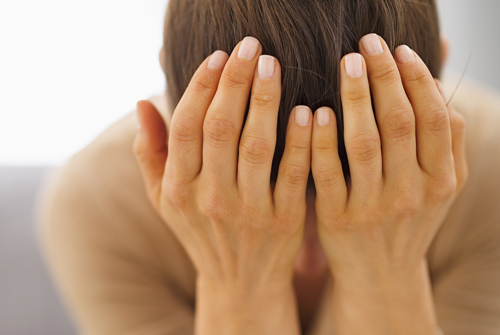Seerat Gupta
Feeling down form time to time is normal part of life but when emotions such as hopelessness and despair takes hold and just won’t go away you may have depression. Depression can happen at any age. Depression is now recognized as occurring in children and adolescent. Mental pain is less dramatic than physical pain, but it is more common and also more hard to bear.
Depending on number and severity of symptoms, a depressive episode can be categorized as mild, moderate, or severe. Depression symptoms can be part of life’s normal lows, but more symptoms you have, the stronger they are and longer they lasted.
Sign and Symptoms : feeling of helplessness and hopelessness, loss of interest in daily activities, weight and appetite change, sleep change, anger or irritability, self-loathing, reckless, behavior, concentration problem, decreased energy or fatigue, difficulty in remembering or making decision, psychotic features (hallucination, delusion etc) may be present, thought of suicide or suicide attempts.
Risk factors : loneliness and isolation, lack of social support, recent stressful life experience, material or relationship problems, early childhood trauma or abuse, alcohol or drug abuse, health problem or chronic pain, unemployment or underemployment.
In depression it feels like there is no light at end of tunnel, but there are many things which you can do it life and stabilize your mood. The key is to start with small goals and slowly building from there. Feeling better take time but you can get there by making positive choice for yourself.
WHO estimated that roughly 36% Indians suffer from major depression at some point in their lives. Studies have found that 3-9% of teenagers meet criteria for depression at some stage and at the end of adolescence, as many as 20% of teenagers reports a lifetime prevalence of depression. The most devastating outcome of concern for adolescent depression is suicide, this is third leading cause of death among older adolescent. In 2013,2471 suicide was attributed to ‘failure in examination’. Close to 8,00,000 people die due to suicide every year. Suicide is second leading cause of death in 15-29 years old.
According to the latest estimate for WHO, more than 300 million people are now living with depression, an increase of more than 18% between 2005 and 2015. Even in high-income countries, nearly 50% of people with depression do not get treatment. On average, just 3% of Government health budgets are invested in mental health, varying from less than 1% in low-income countries to 5% in high-income countries.
Treatment and therapies
Antidepressant treats depression. They help by improving the way your brain uses certain chemicals that control mood or stress but susually take 204 weeks to work.
Psychotherapy helps people with depression. Evidence based approaches, specific for treatment of depression include cognitive-behavioral therapy, interpersonal therapy and problem solving therapy.
Electroconvulsive therapy (ECT) often refers as shock therapy provides relief to people with severe depression. ECT refers to psychiatric treatment in which seizures are electrically induced in patient ot provide relief from mental disorder.
If you know someone who’s depressed, never as them why. Depression isn’t a straight forward response to a bad situation; depression is just life weather. Try to understand the blackness, lethargy, hopelessness, and loneliness they’re going through. Be there for them when they come through the other side.
“Once you choose hope, anything is possible” -Christopher Reeve


